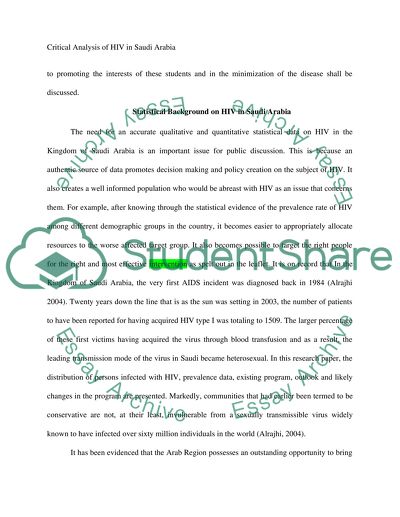Cite this document
(“Ritical analysis of HIV in Saudi Arabia Essay Example | Topics and Well Written Essays - 3000 words”, n.d.)
Retrieved from https://studentshare.org/health-sciences-medicine/1401925-ritical-analysis-of-hiv-in-saudi-arabia
Retrieved from https://studentshare.org/health-sciences-medicine/1401925-ritical-analysis-of-hiv-in-saudi-arabia
(Ritical Analysis of HIV in Saudi Arabia Essay Example | Topics and Well Written Essays - 3000 Words)
https://studentshare.org/health-sciences-medicine/1401925-ritical-analysis-of-hiv-in-saudi-arabia.
https://studentshare.org/health-sciences-medicine/1401925-ritical-analysis-of-hiv-in-saudi-arabia.
“Ritical Analysis of HIV in Saudi Arabia Essay Example | Topics and Well Written Essays - 3000 Words”, n.d. https://studentshare.org/health-sciences-medicine/1401925-ritical-analysis-of-hiv-in-saudi-arabia.


